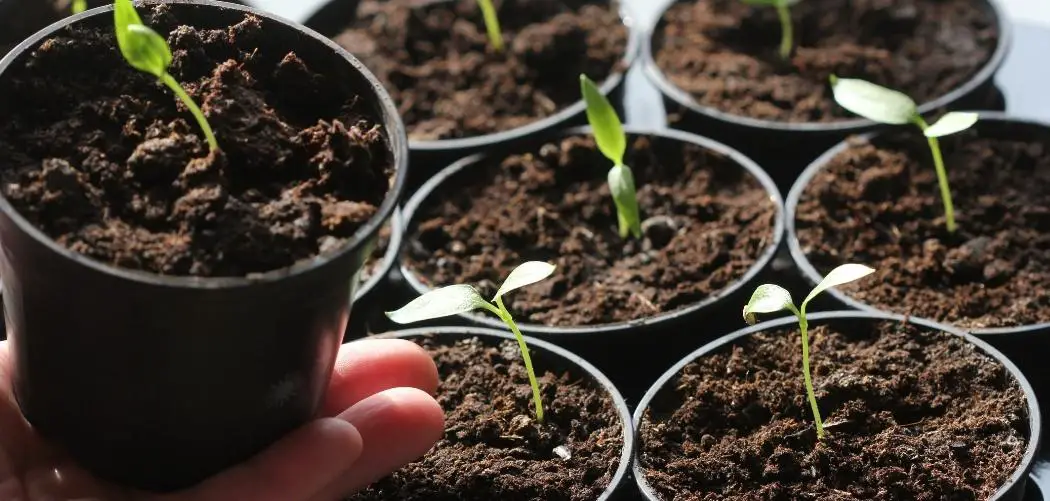We're an affiliate
We hope you love the products we recommend! Just so you know, we may collect a share of sales or other compensation from the links on this page. Thank you if you use our links, we really appreciate it!
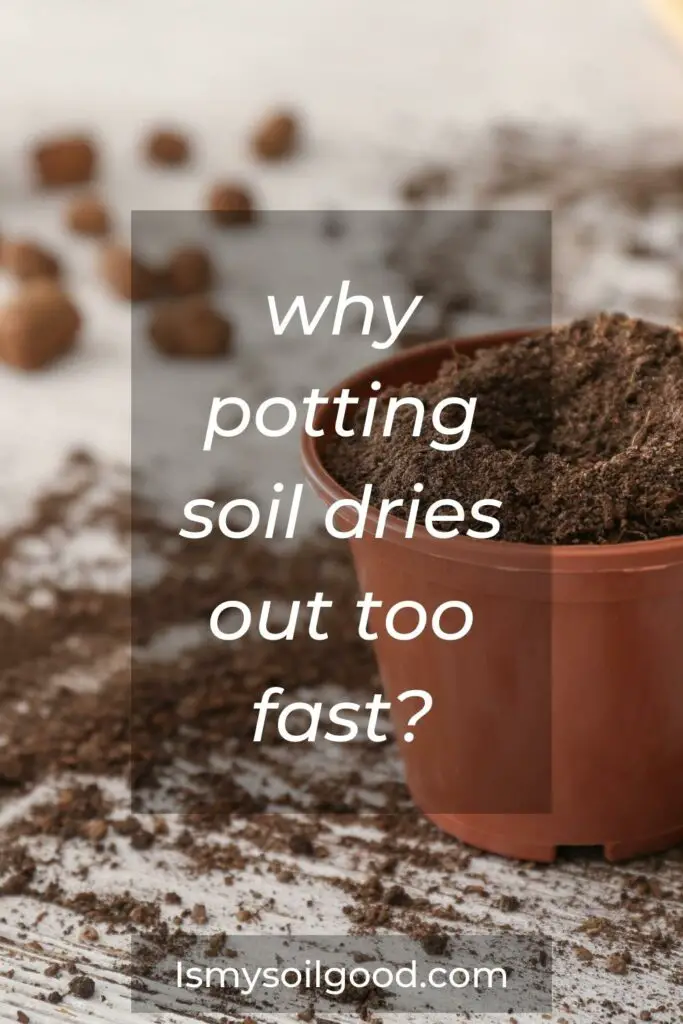
If you’ve been having trouble keeping your potting soil moist, you’re not alone. Many gardeners have this same problem. The good news is that there are a few things you can do to help keep your potting soil from drying out too quickly. In this blog post, we will discuss some of the most common causes of dry potting soil and offer some solutions to help you keep your plants healthy and happy!
Table of Contents
Here’s why potting soil dries out too fast?
- The soil mix is too lightweight
- Improper drainage
- Incorrect watering schedule
- Too much sunlight
Read on below to learn more about why potting soil dries out too fast and how do you keep your potting soil from drying out?
1. The soil mix is too lightweight
One downside of using a lightweight soil mix is that it can dry out more quickly than other types of potting soil. This is because the mix is typically made up of materials like peat moss or coco coir, which have a lower water-holding capacity than heavier soils like clay. As a result, gardeners who use lightweight soil mixes often need to water their plants more frequently to prevent the roots from drying out.
2. Improper drainage
Improper drainage is one of the most common problems with potting soil. If the soil doesn’t have adequate drainage, water will build up and the roots will be unable to access the oxygen they need. This can lead to several problems, including plant stress, root rot, and fungal growth. In addition, the soil will dry out more quickly, making it difficult to maintain a consistent moisture level
3. Incorrect watering schedule
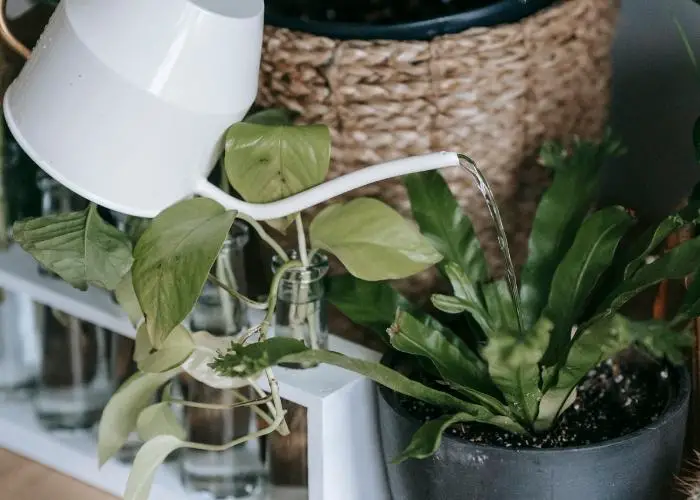
Watering your plants is essential to their health, but it is important to water them correctly. Over-watering can cause the roots to rot, while under-watering will cause the plant to wilt and the leaves to turn brown. One common mistake that people make when watering their plants is using an incorrect watering schedule.
For example, some people water their plants every day, regardless of whether they need it or not. This can cause the potting soil to dry out too fast, as the water seeps through the drainage holes and is not absorbed by the plant. Other people only water their plants when they see that the leaves are wilting, which can be too late to save the plant.
4. Too much sunlight
Too much sunlight can make potting soil dry out too fast. The exposure to the sun dries out the water in the soil, making it difficult for plants to absorb the moisture they need. Additionally, the heat from the sun can cause nutrients in the soil to evaporate, making it harder for plants to get the nourishment they need.
How do you keep potting soil from drying out?
1. Add a layer of mulch on top of the soil
Mulch is a layer of material, typically organic, that is spread on top of the soil. Its main purpose is to protect the soil from erosion and prevent moisture loss. Mulch can be made from a variety of materials, including wood chips, bark, leaves, straw, and even newspaper.
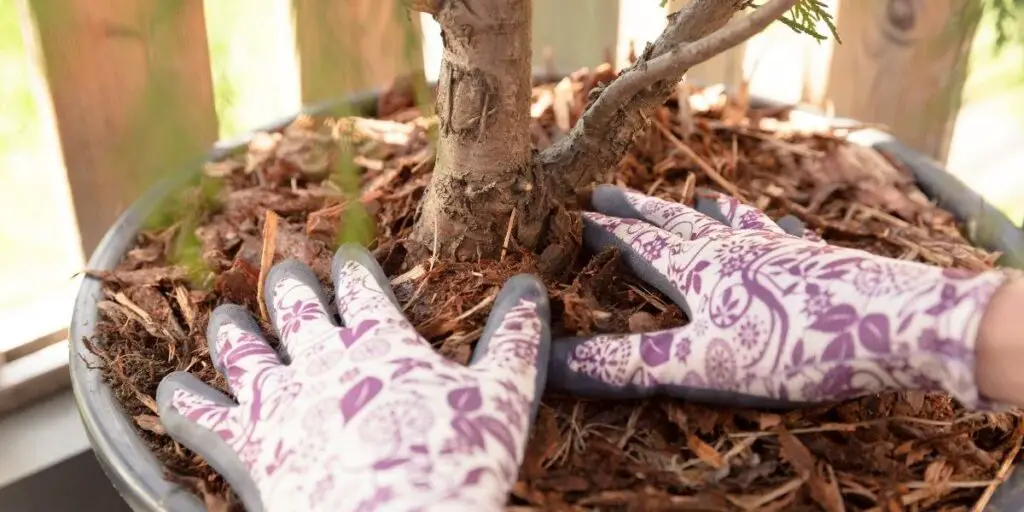
When used in potting soil, mulch helps to keep the soil moist by providing a barrier between the soil and the air. This is especially important in hot weather when evaporation can quickly dry out potting soil. In addition to preventing moisture loss, mulch also helps to regulate temperature extremes and protect roots from frost damage.
2. Water your plants more often
Gardeners know that watering plants is essential to keeping them healthy. Not only does water provide plants with the vital moisture they need to grow, but it also helps to keep the soil around them from drying out. When potting soil becomes too dry, it can become hard and compacted, making it difficult for roots to spread and preventing new seedlings from taking hold. By watering plants regularly, gardeners can help to keep the soil loose and friable, making it easier for roots to grow and ensuring that new seedlings have a chance to thrive. In addition, watering helps to leach out salts that can build up in potting soil over time, preventing them from damaging plant roots.
3. Use a potting mix that has good drainage
A potting mix that drains well helps to keep the potting soil from drying out. dry potting soil can be a source of dust and fines that can clog equipment and interfere with plant growth. By using a potting mix that drains well, you can help to keep the potting soil from drying out and keep your plants healthy and vigorous.
4. Place pots in a shady location
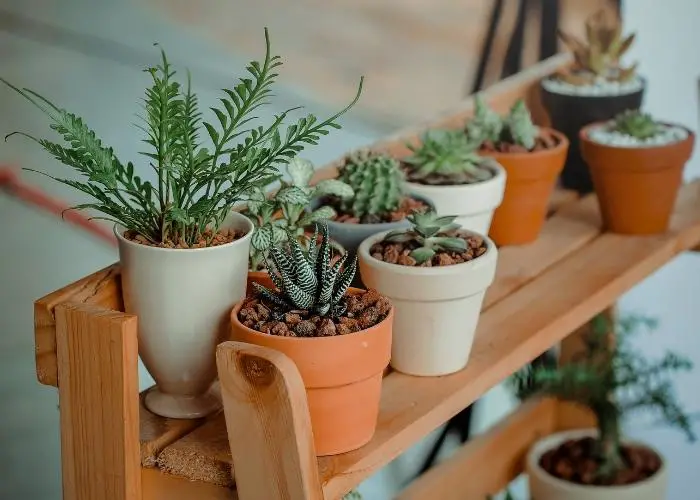
Place pots in a shady location to keep potting soil from drying out. The heat of the sun can cause the soil to dry out quickly, making it difficult for plant roots to absorb moisture. As a result, it is important to provide potting soil with some shade, especially during hot summer days. This will help to keep the soil moist and prevent nutrients from evaporating.
5. Make sure pots have adequate drainage holes
While there are a number of ways to improve drainage, one of the simplest is to make sure that pots have adequate drainage holes. By allowing excess water to drain away, these holes help to keep the potting soil from drying out. In addition, they allow air to circulate around the roots, helping to prevent root rot. As a result, pots with adequate drainage holes can play a vital role in keeping plants healthy and disease-free.
Why is my potting soil not absorbing water?
If your potting soil is not absorbing water, there are a few possible reasons. One of the most common is that the soil is too compacted. When soil is compacted, the pores between the particles are closed off, which prevents water from being able to penetrate. Another possibility is that the potting mix is too dry. If the mix is too dry, it will repel water instead of absorbing it. Finally, if the pot doesn’t have adequate drainage, the water will simply sit on top of the soil and eventually evaporate.
How often should you water potted plants?
How often you should water your potted plants will depend on a number of factors, including the type of plant, the size of the pot, the temperature, and the humidity. In general, most potted plants will need to be watered at least once a week, but some may need to be watered more often. If you’re not sure how often to water your plants, it’s always best to err on the side of caution and water them more often rather than less. you can use a moisture meter to help you determine when your plants need to be watered. And We Recommend XLUX Soil Moisture Meter.
The benefits of using a moisture meter to test the soil’s moisture level
One of the best ways to determine how often to water your potted plants is to use a moisture meter. Moisture meters are inexpensive and easy to use. To use a moisture meter, simply insert the probe into the soil and wait for the reading to stabilize. The moisture meter will give you a reading of the soil’s moisture content, which will tell you whether or not the plant needs to be watered.
Conclusion
Watering potted plants is essential for keeping them healthy and preventing them from drying out. By following the tips above, you can ensure that your plants receive the moisture they need to thrive. In addition, using a moisture meter can help you to water your plants more accurately, saving you time and effort in the long run. You might also like Can You Plant Succulents In Regular Potting Soil And How?

